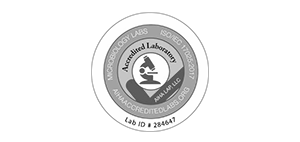
How to Detect Mold in Air and Home: Tips and Tricks
Mold is a common problem in many households, and it can cause serious health issues if left undetected. Mold can grow in any damp or humid environment, and it can spread quickly if not treated properly. It is important to detect mold in your home as soon as possible to prevent it from spreading and causing health problems.
There are several ways to detect mold in your home, including visual inspection, air sampling, and surface sampling. Visual inspection is the most common method, and it involves looking for signs of mold such as discoloration, water stains, and a musty odor. Air sampling involves collecting air samples and analyzing them for mold spores, while surface sampling involves collecting samples from surfaces in your home and analyzing them for mold growth. By using these methods, you can detect mold in your home and take steps to remove it before it becomes a serious problem.
Understanding Mold
What is Mold?
Mold is a type of fungus that grows in damp and warm environments. It is a natural part of the environment and plays an important role in breaking down organic matter. Mold reproduces by releasing tiny spores into the air, which can be easily inhaled.
How Does Mold Grow?
Mold requires moisture to grow. It can grow on any organic material, such as wood, paper, carpet, and food. Mold can grow in any area of the home that has high humidity levels, such as bathrooms, kitchens, and basements. It can also grow on surfaces that have been affected by water damage, such as walls and ceilings.
Why is Mold Dangerous?
Mold can cause a variety of health problems, especially for people with allergies or respiratory issues. Exposure to mold can cause symptoms such as coughing, sneezing, and wheezing. Prolonged exposure to mold can lead to more serious health problems, such as asthma, bronchitis, and even lung infections.
In addition to health problems, mold can also cause damage to your home. It can weaken the structure of your home and cause wood to rot. Mold can also cause stains and discoloration on walls and ceilings, and it can cause unpleasant odors.
It is important to detect and remove mold as soon as possible to prevent health problems and damage to your home. Regularly checking for mold in areas that are prone to moisture, such as bathrooms and kitchens, can help prevent mold growth. If you suspect that you have mold in your home, it is important to have it professionally tested and removed.
Signs of Mold
If you suspect that your home has mold, it is important to identify the signs of mold growth. Here are some common signs that indicate the presence of mold in your home:
Visible Signs of Mold
Mold can grow almost anywhere, but it thrives in damp and humid environments. If you see mold growing on surfaces such as walls, ceilings, floors, or carpets, it is a clear sign of mold infestation. Mold can appear as black, green, gray, white, or brown patches. You may also notice discoloration or staining on surfaces that could indicate mold growth.
Odor and Smell of Mold
Mold has a distinct musty odor that can be easily identified. If you notice a musty or earthy smell in your home, it could be a sign of mold growth. The odor can be particularly strong in areas with high humidity, such as bathrooms, laundry rooms, and basements.
Health Symptoms of Mold Exposure
Exposure to mold can cause a variety of health symptoms. Some of the most common symptoms include coughing, wheezing, shortness of breath, irritation of the eyes, nose, and throat, and skin irritation. If you or your family members experience any of these symptoms, it is important to seek medical attention.
It is important to note that not all types of mold are harmful to human health. However, prolonged exposure to mold can cause serious health problems, especially for people with pre-existing respiratory conditions or weakened immune systems.
If you suspect that your home has mold, it is important to take action immediately to prevent further growth and mitigate any health risks. Regular cleaning and maintenance can help prevent mold growth, and professional mold remediation may be necessary for severe cases.
Detecting Mold in the Air
Mold spores are everywhere, and they can be harmful to your health. Detecting mold in the air is important because it can help you identify the source of the problem and take the necessary steps to eliminate it. In this section, we will discuss two methods for detecting mold in the air: Mold Testing Kits and Professional Mold Testing.
Mold Testing Kits
Mold testing kits are an easy and affordable way to detect mold in the air. These kits come with everything you need to collect a sample of the air in your home and send it to a lab for analysis. Most kits use a petri dish or cassette to collect the sample, and some even offer same-day results.
When using a mold testing kit, it is important to follow the instructions carefully. Make sure you collect the sample in an area where you suspect mold is present, such as a damp basement or a room with a musty smell. Once you have collected the sample, seal it up and send it to the lab for analysis.
Professional Mold Testing
If you suspect you have a mold problem but are unsure where it is coming from, professional mold testing may be necessary. A professional mold inspector will come to your home and conduct a thorough inspection to identify any areas where mold is present.
During the inspection, the inspector will use a variety of tools to detect mold in the air, including air sampling equipment and moisture meters. They will also visually inspect areas where mold is commonly found, such as the bathroom, kitchen, and basement.
Professional mold testing can be expensive, but it is often necessary if you have a severe mold problem or if you are experiencing health problems related to mold exposure. If you decide to hire a professional mold inspector, make sure they are certified and experienced in mold detection.
In conclusion, detecting mold in the air is an important step in identifying and eliminating a mold problem in your home. Whether you choose to use a mold testing kit or hire a professional mold inspector, it is important to take action as soon as possible to protect your health and the health of your family.
Detecting Mold in the Home
Mold can grow in any moist environment and can cause health problems if left unchecked. Here are some steps you can take to detect mold in your home.
Visual Inspection
The most common way to detect mold is through a visual inspection. Look for signs of mold growth, such as discoloration or black spots on walls, ceilings, or floors. Check areas that are prone to moisture, such as bathrooms, kitchens, and basements. Mold can also grow on carpets, furniture, and clothing.
If you see mold, take action immediately to prevent it from spreading. Wear protective gear such as gloves, goggles, and a mask when cleaning up mold.
Moisture Detection
Mold needs moisture to grow, so detecting moisture in your home can help you find mold. Check for leaks in pipes, roofs, or windows. Look for water stains or discoloration on walls or ceilings. Check for standing water in your basement or crawl space.
Using a Moisture Meter
A moisture meter is a tool that measures the moisture content in materials such as wood, drywall, or concrete. Using a moisture meter can help you detect hidden moisture in your home that may be causing mold growth.
To use a moisture meter, insert the pins of the meter into the material you want to test. The meter will give you a reading of the moisture content. If the reading is high, it may indicate the presence of mold.
In conclusion, detecting mold in your home is essential for maintaining a healthy environment. By performing a visual inspection, checking for moisture, and using a moisture meter, you can identify mold growth and take action to prevent it from spreading.
Preventing Mold Growth
Mold growth can be prevented by controlling moisture indoors. Here are some tips to prevent mold growth in your home:
Controlling Humidity Levels
Keeping humidity levels in your home as low as possible is crucial to preventing mold growth. Ideally, humidity levels should be between 30% and 50% all day long. An air conditioner or dehumidifier can help you keep humidity levels low. You can buy a meter to check your home’s humidity at a home improvement store.
Proper Ventilation
Proper ventilation is key to preventing mold growth in your home. Make sure to ventilate areas where moisture is produced, such as the bathroom, kitchen, and laundry room. Use exhaust fans or open windows to improve air circulation and reduce moisture levels.
Regular Cleaning and Maintenance
Regular cleaning and maintenance can help prevent mold growth in your home. Here are some tips to keep your home clean and dry:
- Fix any leaks in your home immediately
- Clean and dry any wet or damp areas within 24-48 hours
- Use mold-resistant products in areas prone to moisture, such as bathrooms and kitchens
- Regularly clean and maintain air conditioning units, dehumidifiers, and humidifiers
By following these tips, you can prevent mold growth in your home and ensure a healthy living environment.







